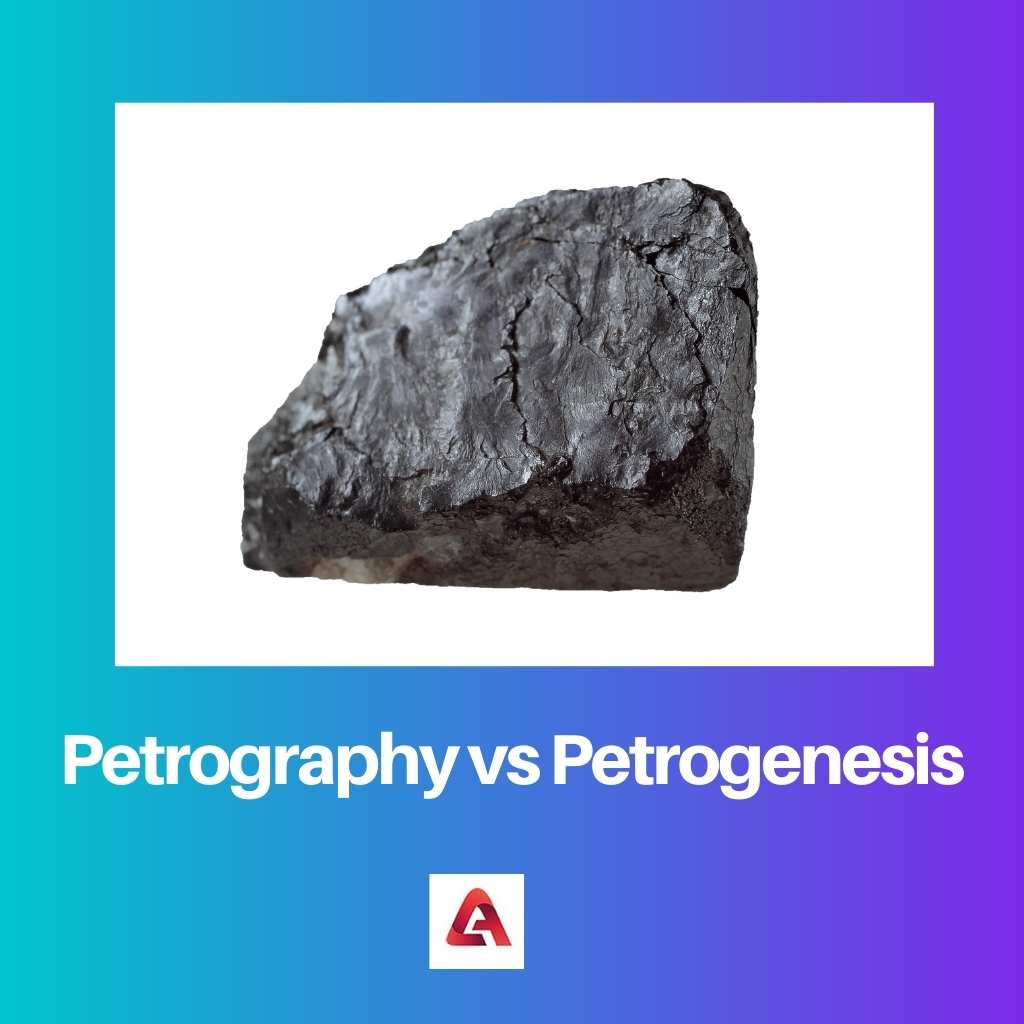Ever came across a rock and wondered how it was formed? Ever wondered why some rocks look different from others? It’s likely that you must have done so, but never got a chance to learn about that rock.
Although the rocks looked dirty and filled with bacteria, when you observe them closely on a microscopic level, you will see that they’re made of different minerals.
And this study of rocks comes under petrology, which is further divided into two categories: petrography and petrogenesis.
Key Takeaways
- Petrography involves the study of rocks’ physical and chemical properties, while petrogenesis is concerned with the formation and evolution of rocks.
- Petrography primarily studies rock textures and mineralogy, while petrogenesis focuses on the processes that lead to rock formation.
- Petrography is used to identify and classify rocks, while petrogenesis is used to understand the geological history of rocks.
Petrography vs Petrogenesis
Petrography is the study of the properties of rocks, like composition, texture, and structure of rocks using microscopy and other techniques. Petrogenesis aims to understand the geological history of rocks and how they have evolved over time, the conditions and processes that led to their formation.

Using petrography, rocks are described in an orderly way, along with their composition and organization. Petrography uses microscopes to examine rocks at the microscopic level since minerals are only examined at the atomic level.
\Furthermore, those who study petrography or practice petrography are known as petrographers.
The study of petrogenesis is concerned with how rocks are formed. Petrogeny is another name for Petrogenesis. Additionally, petrogenesis is mostly used to describe processes that create igneous rocks.
For example -During an eruption, the hot, molten magma or lava spews from cracks and crevices on the Earth’s surface and then starts cooling very slowly. Under the Earth’s surface, this cooling and solidification occurs sometimes, but it can also occur on the surface, forming rocks.
Comparison Table
| Parameters | Petrography | Petrogenesis |
|---|---|---|
| Focus | Focuses on detailed descriptions of rocks. | Focuses on the origin and formation of rocks. |
| Usage | To tell the condition of some structures. For example, studying the walls of a pyramid. | To study evolution of earth and its surface. |
| Applications | Modification of potter’s clay. | To study the past volcanic eruptions or meteor attacks. |
| Profession | Petrographer | No specific term but can be called as geologist. |
| Aim | Predicting the durability of the rock by explaining its mechanical behavior | Study those rocks in order to derive information of the tectonic and environmental conditions that must have existed at the time they were formed. |
What is Petrography?
In geology, the term “petrography” refers to detailed descriptions of rocks and the minerals found in that rock. Petrology is the study of rocks which show how they form, and it falls under the category of petrography.
Furthermore, petrography is concerned with the composition and organization of the rocks along with their orderly description. Microscope level examinations of rocks are especially important in petrography as minerals are only studied under atomic level.
Additionally, the one who study petrography or practice petrography is termed as petrographer.
During petrographic analysis, rocks are classified based on the information they provide after the microscopic observation. There’s a special type of microscope for petrography called as the petrographic microscope.
It is the most critical tool for petrographers as it helps them to study rocks more efficiently. They can use it to analyse and determine a mineral’s chemical characteristics.

What is Petrogenesis?
In petrology, petrogenesis is the study of how rocks are formed. It is also known as petrogeny. Furthermore, we use the term petrogenesis primarily when referring to processes that result in igneous rocks.
This term is also used to describe the processes associated with metamorphism and sedimentation.
A metamorphic rock forms when rock undergoes many different physical and chemical changes over time due to pressure, heat, and different chemical processes.
Whenever sedimentary rocks or igneous rocks are subjected to physical processes such as pressure exposure, temperature changes, and tectonic plate movement along plate edges.
When exposed to an environment, these rocks can undergo changes and form metamorphic rocks Sedimentary rocks form as a result of deposition upon the Earth’s surface and subsequent cementation.
Formation of these rocks occurs when weathered remains of other rocks are deposited on them and sediments are accumulated and consolidated beneath the Earth’s surface. Biogenic activity can also result in the deposition of such materials.

Main Differences Between Petrography and Petrogenesis
- Petrography is the study of rocks and their descriptions, particularly under a microscope. while, Petrogenesis is the study of the origin and formation of rocks.
- Petrography is used to study particular structures while petrogenesis is the study of the evolution of a particular area of earth or the earth as a whole.
- The one who study petrography is called petrographer while the one who study petrogenesis is called as geologist.
- Petrography is done of every rock but petrogenesis is especially done on igneous rocks.
- Petrography is done to modify potter’s clay while petrogenesis is done to study past natural calamities which lead to evolution of earth.
- https://geoconvention.com/wp-content/uploads/abstracts/2020/58217-petrography_-a-brief-history-of-rock-imaging-and-c.pdf
- https://api.research-repository.uwa.edu.au/ws/portalfiles/portal/22867078/THESIS_DOCTOR_OF_PHILOSOPHY_BJORKMAN_Katarina_Edith_2017_Part_1.pdf
